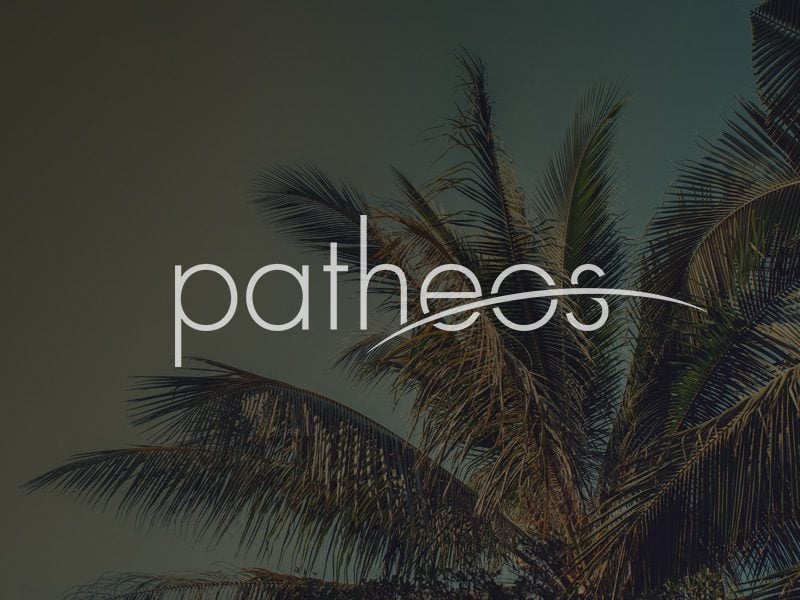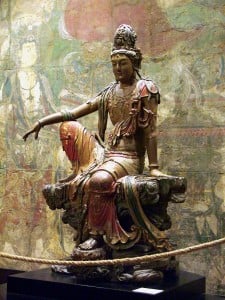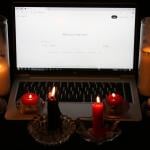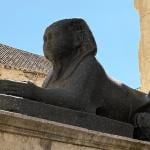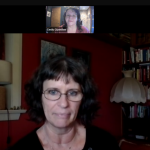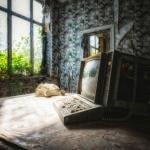My husband Michael, our friend, and I gather weekly to share lunch and study. We’re a diverse group with my husband being a magician, I’m a Neo-Pagan Gaian, and our friend is a Catholic occultist. What draws us together is our desire to learn about our world, our souls, and the greater mystery of how the infinite Divine Universe moves through the finite material.
We share essays we’ve found or written about movies with an occult or spiritual theme. We recommend books and essays to each other. Our meals and discussions are a lot of fun. We sit back with good food and drink, sometimes wine or independently brewed ale or beer.
Just a couple of weeks ago we decided to take on a more formal study of the Cabala. We take turns reading aloud Paths of Wisdom:
The Magical Cabala in the Western Tradition by John Michael Greer.
Admittedly, I’ve put off learning about the Cabala for many years mainly because of the heavy use of the Hebrew Alphabet. I first noticed my south midland ears couldn’t understand foreign dialects during high school Spanish. This was further proven when I lived in California and often had to ask Mexicans to please repeat themselves or slow down. I eventually began to communicate with a polite nod and smile with just a few words of thanks and restaurant menu items. However, there is a big difference between ordering your favorite burrito and walking along with the powers that be.
I understood that there would be intensity in utilising symbols that had been empowered for thousands of years, but I was still worried that a mispronunciation would have either no effect or a detrimental one. Mike and I have a friend who went to school in Israel since his parents are missionaries. He will be helping us pronounce the Hebrew letters and names of God when I come by with lists of things I need help pronouncing. It’s ironic though since he’s an atheist.
There is also the idea that maybe the study group’s intent is what matters. After all, surely all of the western practitioners of Cabala don’t know exact Hebrew and their rituals offer moments of empowerment or peace depending on which sphere they are learning about.
At my atheist friend’s rehearsal dinner, his father offered a prayer in Hebrew. It sounded like music, gentle and powerful music. The beauty of the sounds eased my worries about studying parts of a different language.
When the study group gathered to read, I could grasp what Greer was saying about the different states of the material world and the infinite and the various paths of Cabala one used to help them understand the different spheres. But I was once again unable to connect to the symbols since they were so foreign to me. How would I ever memorize them and understand them?
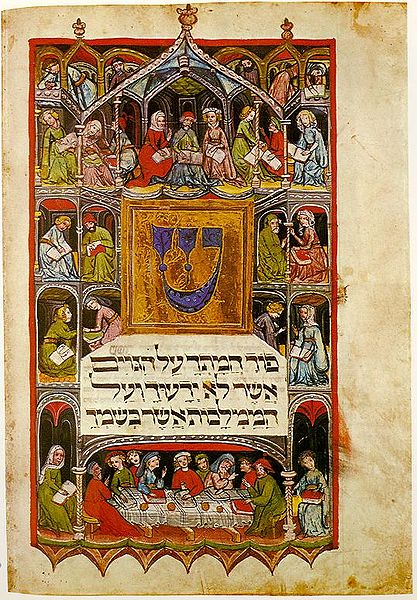
14th century German illuminated Haggadah for Passover. The lamb skin parchment is stained yellow with some deep brown rubs along the edges. Since the Jewish people read right to left the large margin is right of the image. Along both sides of the image people in bright colored close are reading in what appears to be small rooms. At the top under a domed roof, people gather on large cushions as they read. At the bottom people are reading at a table. In the center of the illumination there is a Hebrew letter in blue inset in a gold box. Bellow it is more Hebrew text. (Wikipedia)
Then my interlibrary loan book arrived, People of the Book by Geraldine Brooks. It’s about a book conservator named Hanna who’s trying to find out how an illuminated Jewish Haggadah survived hundreds of years of the Inquisition, Nazi Rule, and Jewish persecution. A Haggadah is a book that details the order of the Passover Seder.
Between the chapters about Hanna, we learn about the people who rescued the book and finally those who created it. So far my favorite section is about the scribe and his daughter.
It was in the still of the early hours, when the stars blazed in the black sky, that it happened. His fasting, the chill, the brilliant flare of the lamp: suddenly the letters lifted and swirled into a glorious wheel. His hand flew across the parchment. Every letter was afire. Each character raised itself and danced spinning in the void. And then the letters merged into one great fire, out of which emerged just four, blazing with the glory of the Almighty’s holy name. The power and the sweetness of it were to much for Ben Shoushan, and he fainted. (223)
There is a lot of technical work that goes into calligraphy. Ben’s daughter Ruti didn’t have to struggle with writing and rewriting lines of text or perfecting the squared lower left corner of tet as her brother did while apprenticing.(234) She secretly studied Kabbalah at night which was forbidden to her both because of her young age and her gender. (232)
Any tiny letter was a poem, a prayer, a gateway to the splendor of God. And every letter its own road, its own special mystery …
When she thought of the letter beit, it was not of the thickness of lines or the exactitude of spaces. It was of mysteries: the number two, the dual; the house; the house of God on earth. “They will build me a temple and I will dwell in them.” In them, not in it. He would dwell within her. She would be the house of God. The house of transcendence. Just a single, tiny letter, and in it, such a path of joy. (234)
After experiencing Ruti’s thoughts I’m anxious to further explore the paths with the Cabala.


